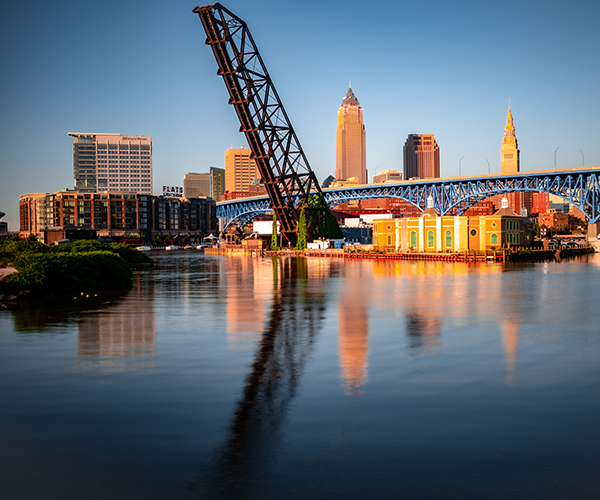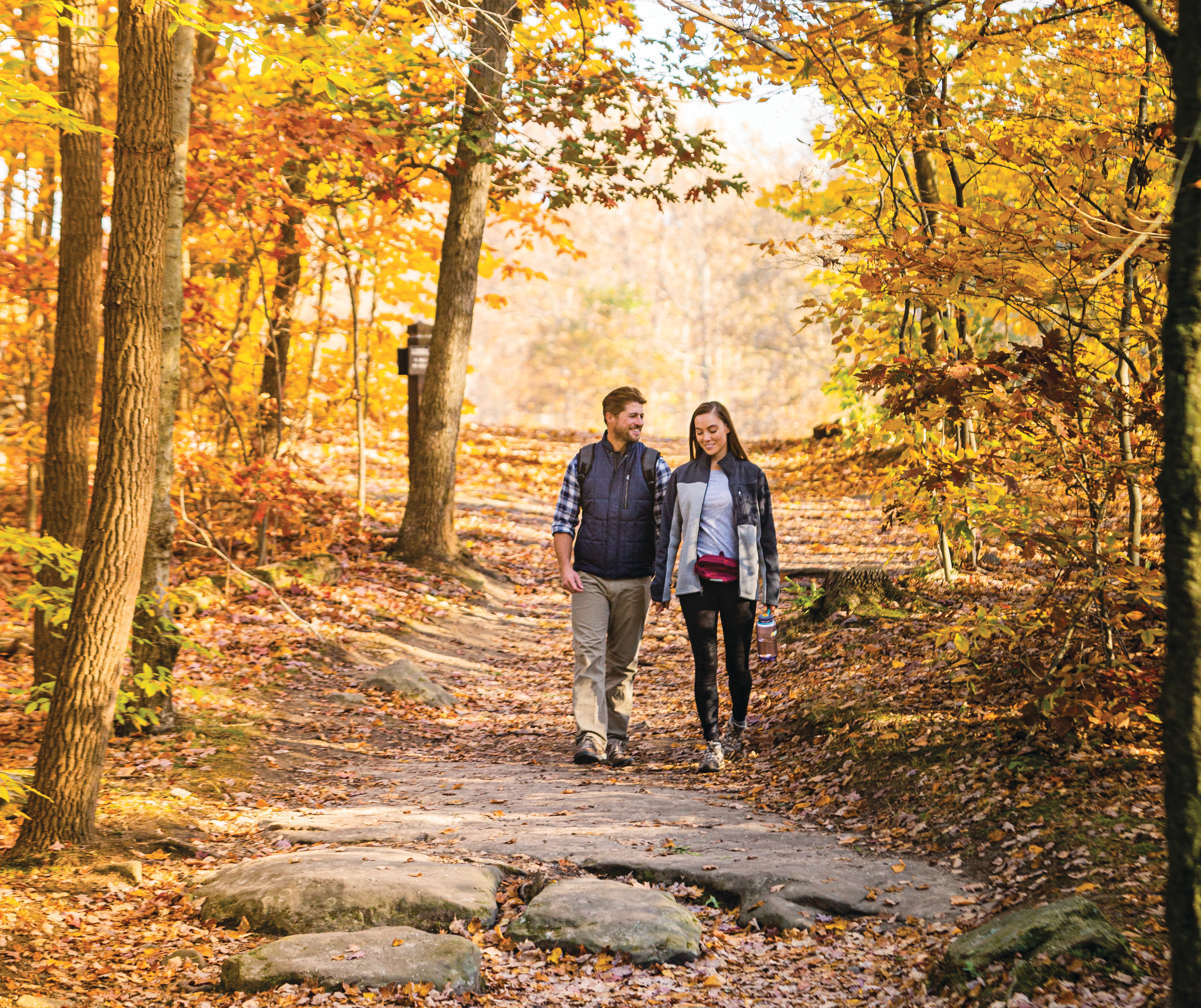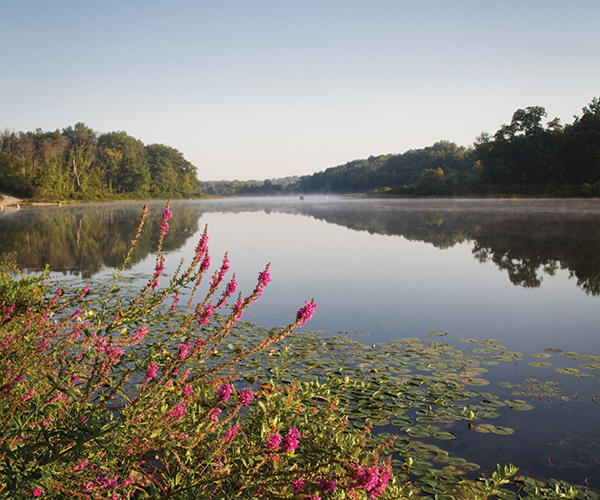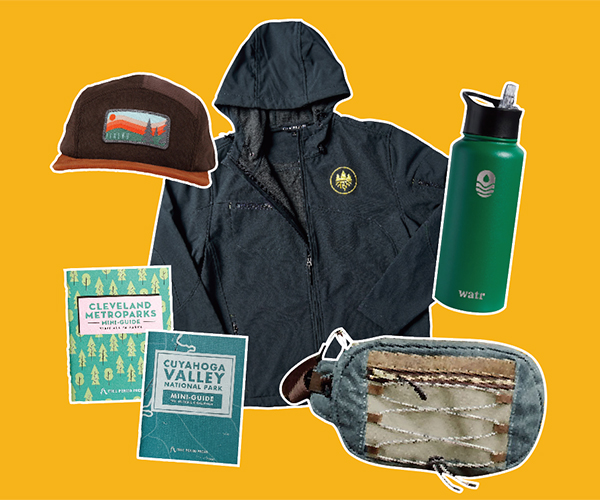The Nostalgia Artist
William Kless brings the past to the poster
by Erick Trickey | May. 25, 2006 | 4:00 AM
When William Kless showed his posters to the manager of Tower City’s outdoor displays, who got his start with Higbee’s department store 45 years ago, he got the best possible praise. “You’ve captured the old feeling so well,” the manager enthused.
That’s the reaction Kless wants. His Shaker Rapid poster, a year in the making, recalls the ’30s and ’40s design styles, streetcar era, and downtown and the East Side in their prime.
The poster’s streetcar and yellow lettering pop out from a deep navy-blue background. The Terminal Tower stands behind them, a dignified brownish gold. Streetcar destination boards frame the top and bottom. The iconic train and tower evoke ’30s transport posters such as British Railway ads, but Kless slyly mixes classic designs: the bold yellow lettering actually recalls ’40s pulp and sci-fi magazine covers.
Step closer, and you can see why it took Kless a year to paint “Shaker Rapid.” The smooth poster has a textured look. Kless painted on a linen canvas, drawing a dry brush across it to build up paint, exaggerating the texture so it looks like an old linen postcard. “I can make use of the cracks and crevices, the nooks and crannies,” he says. “That makes it hard to do that detail I like, but I think that’s what makes it unique.”
By detail, Kless means the gravel on the train tracks, the Terminal Tower’s windows. He also means the dots of contrasting color that enrich the blue and warm the yellow. Little purple spots in the blue, “almost like pointillism,” deepen it. “Look at the yellow,” he says. “There’s still a lot of small dark spots. You can have a purple spot right in the middle of the yellow.”
Kless, 62, of Aurora, retired as the chair of Cuyahoga Community College’s commercial art department in 2002 after 20 years there. He taught high school before that and drew technically adept pen-and-ink illustrations of trains in his spare time. In summer 1981, he painted a poster of Euclid Beach Park landmarks in an affectionate, dark, sepia-like brown: the gatehouse, the pier, a roller coaster, the dance pavilion. It took him 24 hours. “It had this immediacy. It was art that poured from the heart.” A hit at art fairs, it still sells well.
More nostalgic posters followed: a painting of the terror-filled Euclid Beach attraction Laughing Sal (1983), an artistic map of the Lake Erie Islands (1988) and a graphic collage commemorating Medina’s Chippewa Lake Park (1993). He’s sold about 4,000 to 5,000 posters in all.
“Shaker Rapid” debuted in 2004 and brought Kless a new round of attention. Tower City displayed his work in the old Higbee’s front windows. Now his work is for sale at Lake Erie Artists, a co-operative gallery in the mall.
Kless works in the front room of his Aurora house. His shelves hold vintage Lionel train catalogs, typeface books and a collection of mid-20th-century pulp magazine covers (“Art of Imagination: 20th Century Visions of Science Fiction, Horror, and Fantasy”).
Tracing paper covers his table. He’s working on his next poster, the mammoth Christmas tree that filled the atrium of downtown’s Sterling-Lindner department store. Working off old articles, postcards of the tree and archival photos, he’s sketched out facts, ideas and rough illustrations. “Warm,” “Romantic,” read the notes on tone. “Tallest indoor tree,” “76 feet,” “the great court,” “1927-1967,” read the notes on what, where and when. He’s sketched the lettering: “Sterling-Lindner” in a Gotham font to evoke urban grandeur, “The Traditional Tree” in script for a holiday softness.
Viewers point at Kless’ maps of the islands and the Shaker Rapid lines and reminisce about vacations, homes, shopping. They rave about Euclid Beach attractions Kless didn’t include in his poster, such as the skating rink. “I can’t paint all your memories for you,” Kless says, “but I try to stimulate them.”
Trending
-
1
-
2
-
3
-
4
-
5










